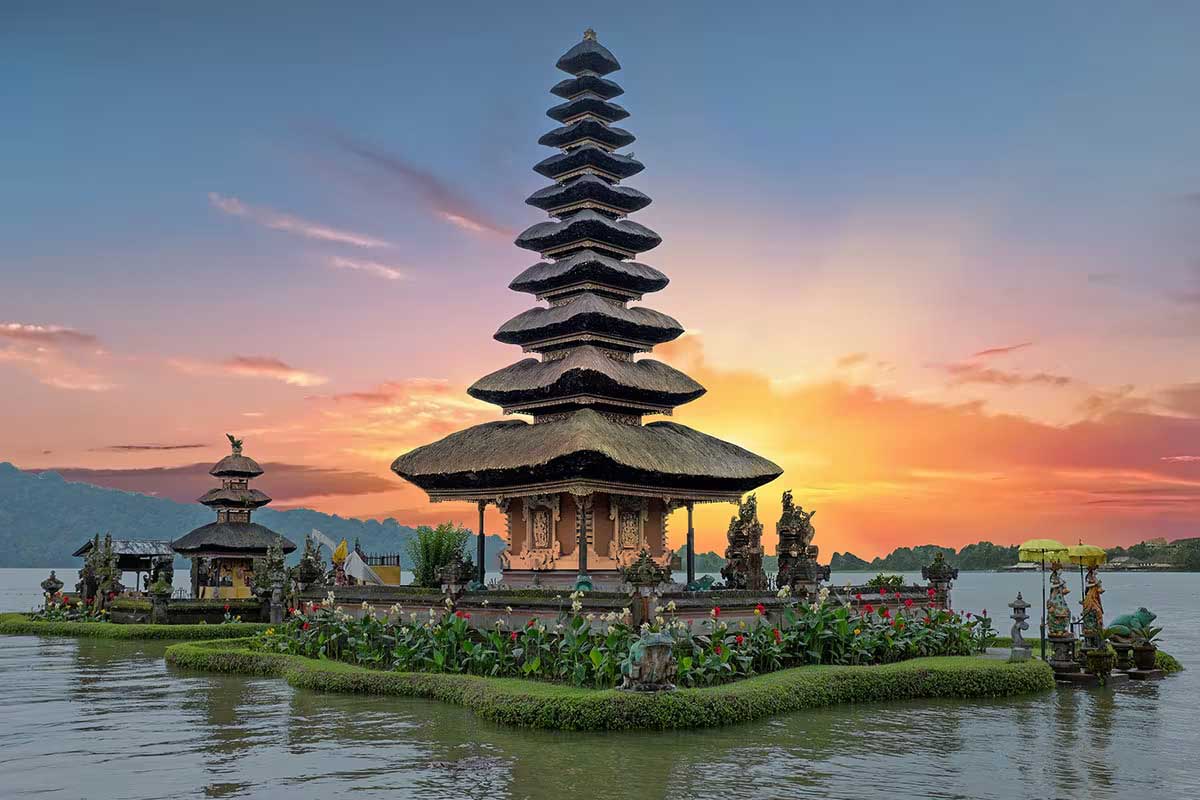
Nestled in the highlands of Bali's Bedugul Regency, Ulun Danu Temple rises majestically above the serene waters of Lake Beratan. Known for its breathtaking vistas and spiritual significance, this iconic temple is a must-visit for anyone exploring the rich cultural tapestry of Bali.
A Picturesque Setting
Ulun Danu Temple is perched on a plateau approximately 1,500 meters above sea level, surrounded by lush mountains and cool, crisp air. The tranquil waters of Lake Beratan frame the temple, reflecting its intricate architecture. As mist rises gently from the lake, the surroundings take on a dreamlike quality, drawing visitors into a serene escape from the hustle and bustle of everyday life.
The Divine Inspiration
Constructed as a homage to the Goddess Danu, a revered figure in Balinese culture, Ulun Danu Temple has profound spiritual significance. The word "Danu" translates to "lake," and the goddess is recognized as the queen of water, lakes, and rivers, vital to the agrarian lifestyle of the local communities. The temple complex is a marvel of architecture, comprising four main structures:
Linga Pura: Dedicated to Lord Shiva, this temple features a three-tiered structure that symbolizes the divine connection between heaven and earth.
Pura Puncak Mangu: Standing at 11 tiers, this temple is dedicated to Vishnu, the preserver of the universe, emphasizing the temple's adherence to the Trimurti belief in Hinduism.
Pura Teratai Bang: This central temple is the focal point of worship within the complex.
Pura Dalem Purwa: Constructed to honor Sang Hyang Widhi, this temple also serves as a site for prayers related to fertility and prosperity.
The architecture embodies the essence of the three major gods in Hinduism: Brahma (symbolized by the color red), Vishnu (represented by black), and Shiva (denoted by white).
Historical Legacy
Ulun Danu Temple boasts a history that stretches back to at least 1556, indicating its long-standing importance in Bali’s religious practices. Archaeological evidence suggests the area has been used for worship since the megalithic era, with artifacts such as a sarcophagus and stone slates dated as far back as 500 BC found nearby.
In 1633, the temple underwent significant renovations led by the King of Mengwi, I Gusti Agung Putu, who infused elements of both Hindu and Buddhist architecture into its design. Despite the passage of centuries, the temple remains well-maintained, reflecting the dedication of the local community to preserve this historical and spiritual treasure.
Ulun Danu Temple is distinctly recognized as one of the quintessential symbols of Bali, so much so that it graces the design of the 50,000 rupiah bill, further cementing its status in Indonesian culture.
The Vitality of Lake Beratan
Lake Beratan, the second-largest lake in Bali, plays a critical role in the island's agriculture, providing essential irrigation for rice paddies and plantations in the surrounding Bedugul Village. Known as "the holy mountain," the region benefits from a cool climate and fertile soil, cultivating an environment rich in biodiversity and spirituality.
The lake's name derives from "Brata," which signifies a commitment to fulfilling life's primary needs. The tradition of “Tapa Brata,” or meditative alignment with nature, reinforces the area's spiritual significance, attracting those looking to connect with the natural world and themselves.
A Must-Experience Destination
Visiting Ulun Danu Temple offers more than just a glimpse into Bali’s cultural heritage; it is an invitation to experience the harmony between nature and spirituality. With its captivating views, rich history, and vital role in the community, this temple stands as a testament to the island's enduring spirit and allure.
The majestic Ulun Danu Temple on Lake Beratan is not merely a site for worship but a sanctuary that embodies the essence of Balinese culture, spirituality, and the beauty of nature, making it an indispensable highlight of any journey to Bali.



